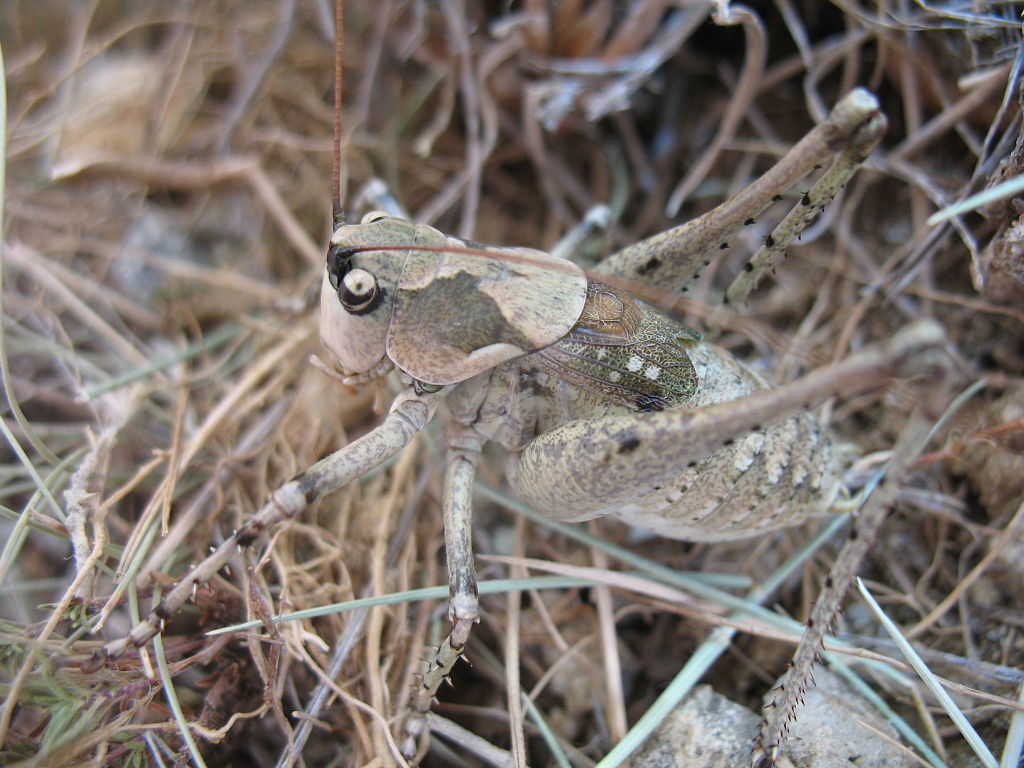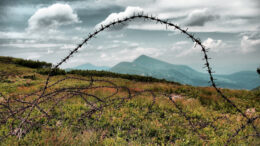The Russian bombs falling on Ukraine are putting millions of people and a vibrant culture at risk.
Vladimir Putin’s invading forces could also damage the Ukrainian landscape, home to dozens of unique and endangered species.
Here are 20 species that could find themselves further threatened by the invasion.
Russian desman (Desmana moschata) — The only member of its genus, this endangered semiaquatic mammal is related to moles (and like moles, it’s functionally blind). Found in Russia, Kazakhstan and Ukraine — and recently extinct in nearby Belarus — the species faces declines due to poachers’ fishing nets and habitat loss. It went extinct in Ukraine in the 19th century but was reintroduced there in the 1950s — around the same time Joseph Stalin died.
Sandy mole-rat (Spalax arenarius) — A rodent unique to Ukraine, this endangered species has just one remaining stronghold, the Black Sea Biosphere Reserve, which may put it firmly in the path of Putin’s invading forces.
View this post on Instagram
Crimean rowan (Sorbus tauricola) — Native only to Ukraine, this rare plant exists in just 3-5 locations, where an invasive wasp called the mountain ash seed chalcide (Megastigmus brevicaudis) damages 99% of its seeds before they can become the next generation.
Vitrea nadejdae — This endangered snail is known from just five locations in Ukraine, each of which is (or was) a popular tourist destination.
Saker falcon (Falco cherrug) — This wide-ranging but endangered species faces a host of threats across its range. The birds don’t breed in Ukraine, but they do spend time there every year. The Ukrainian Birds of Prey Research Centre calls the population in the country “extremely vulnerable.” War won’t make the nation any more hospitable.
Zubowski’s plump bush-cricket (Isophya zubowskii) — Most of this endangered insect’s habitat is found in Romania, but its populations in Moldova and Ukraine are described as “very small and isolated.”
View this post on Instagram
Idänvaskinen (Orthonevra plumbago) — This hoverfly was historically found in more than a dozen European countries, but according to the IUCN “all assumed 10 localities might be so small that they are at the risk of immediate extinction.”
Betula klokovii — Endemic to Ukraine, this birch tree remains in just two mountainous locations. Its population has declined to about 50 mature individuals, mainly due to mining and chalk quarrying.
Pontian shemaya (Alburnus sarmaticus) — This endangered carp may be extinct in Hungary and Romania, but it remains in Croatia, Slovenia and Ukraine. Its current population is unknown.
Crimean stone grasshopper (Asiotmethis tauricus) — This endangered insect is found in just a small portion of Ukraine, including Crimea. It also lived in Russia, but its continued presence in that country is uncertain. Most of its former habitat has been converted to farmland.
Melanogaster jaroslavensis — This fruit fly is known from just seven locations in Russia and one in Ukraine. Grazing, fertilizer pollution and river development have made it endangered.
Chornaya gudgeon (Gobio delyamurei) — This critically endangered carp is restricted to a 1 kilometer stretch of stream below Ukraine’s Chornaya Gorge. The IUCN, which hasn’t assessed the species since 2008, warns this tiny habitat “may totally dry up in the summertime” and adds that “the species is also susceptible to climate change as the severity of droughts is predicted to increase.”
Retowski’s tonged bush-cricket (Anadrymadusa retowskii) — Native only to Ukraine, this insect has become endangered due to habitat destruction. The IUCN warns that some of its severely fragmented populations “may go extinct.”

Sorbus roopiana — Ukraine is one of the four countries in which this plant still grows, although according to the IUCN “the populations in Crimea are separated from the main part of its distribution.” Fewer than 100 individuals are thought to remain on Earth.
Merodon dzhalitae — An endangered hoverfly found only in Crimea, which has mostly been carved up by urbanization.
Medicago saxatilis — An endangered herb with no common name, known from just five locations in Crimea.
Andrena labiatula — This Ukrainian bee hasn’t been seen since 1963 and is only known from three specimens found on the Crimean peninsula. It’s officially listed as critically endangered.
Cobitis taurica — This poorly studied freshwater fish, a relative of Europe’s spined loach, exists in under one mile of a river below Chornaya Gorge.
Allium pervestitum — A garlic relative, this plant grows in just two areas of Ukraine. Limestone quarrying and urbanization put it on the endangered species list.
Фискомитриум песчаный (Physcomitrium arenicola) — This endangered moss grows in Russia and Ukraine, where it’s at risk from intensive livestock grazing and tree plantations. Scientists don’t know how well the species is doing — only that it’s rare. The IUCN says its populations are “considered to be severely fragmented since the subpopulations are small and isolated from each other.”
Previously in The Revelator:
Memorializing the Wake Island Rail: An Extinction Caused by War
![]()


